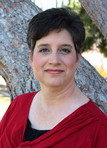Laurisa White Reyes's Blog
May 31, 2019
MY FINAL POST
I've decided to shut down my blog. On average, about 10-15 people read my posts. While I am deeply grateful for those loyal followers, it's just not worth the effort to maintain this blog.
My blog's archive will remain online. However, to receive updates on my books and Skyrocket Press, please subscribe to my newsletter. Thank you.
https://mailchi.mp/7861dc13bbef/skyrocketpressnews
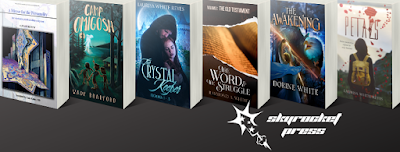
My blog's archive will remain online. However, to receive updates on my books and Skyrocket Press, please subscribe to my newsletter. Thank you.
https://mailchi.mp/7861dc13bbef/skyrocketpressnews

Published on May 31, 2019 05:30
May 29, 2019
WRITER 2 WRITER: THE PROS AND CONS OF SELF-PUBLISHING
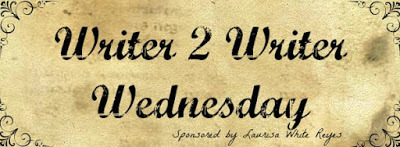
SUCCESSFUL SELF-PUBLISHING, PART II
So, you’re considering self-publishing your book but are still not sure if it’s the right choice for you. Let me assure you that it is wise to take a step back and carefully look at your options before jumping right in.
In today’s 2nd part of my Successful Self-Publishing series, I will share the pros and cons of going the indie route. (Read part 1 of my series, “Should I Self-Publish?” HERE.) Let’s start with the cons:
THE CONS OF SELF-PUBLISHING
1. MONEY – If you think you can publish a top-quality book for nothing, you’re in the wrong business. Sure, you can crank out a poorly edited, badly designed product with a crappy cover and hang an Amazon “For Sale” sign on it if you want. But don’t expect anyone but your mother to buy it.
Let’s be honest here. Most of us write books because we want people to read them. And to accomplish that, people need to buy them. In the world of traditional publishing, producing and marketing a book can take tens of thousands of dollars. While self-publishing shouldn’t cost nearly that much, it does cost. Cover art, line editing, proofreading, design, formatting, and marketing all require money to do it right. And that money has to come out of your pocket.
2. MARKETING – When it comes to marketing, traditional publishers have a whole slew of resources at their fingertips. They have networks and budgets in place to acquire reviews, pay for advertising, and schedule book tours. Indie authors must handle all of this alone. Too often, authors think that they can effectively sell their books just by posting about them on Facebook or other social media.
The truth is, if you want to sell books, you need reviews and advertising, too. You need to establish a fan base and connect with them in a meaningful way. You need to set up blog tours as well as go to events to sell books in person. Again, as the author, this is all your responsibility, which takes a lot of time and money. And there are still no guarantees your book will sell.
3. COMPETITION – Hugh Howey, E.L. James, and Amanda Hocking have made millions! So what? Listen, folks, mega-hits like Wool and Fifty Shades of Gray are the exception, not the rule, for self-publishing. According to a 2016 New York Times article, only about 40 self-published authors currently “make money” (meaning they’ve sold over a million copies and are hugely successful). The rest of the hundreds of thousands of SP titles out there are lucky if they sell a dozen copies a year.
In other words, your book will be a very tiny drop in a vast ocean . And since there are a limited number of book buyers out there, your share in the market isn’t likely to be very big. Does that mean your book doesn’t stand a chance? Of course not. But going into this business without being completely aware of what you’re up against is a bad idea.
Okay. Now that I’ve totally burst your bubble, let me share with you some good reasons to self-publish DESPITE the negatives I just listed above.
THE PROS OF SELF-PUBLISHING
1. CONTROL – It’s a joke in the traditional publishing industry, just how long the publishing process takes (two years on average for a novel.) Also, once that manuscript is out of the author’s hands, he/she has little say in what happens next. Editing, cover design, marketing, even the price of the book are all decisions made by someone else. Self-publishing allows you to control the project through every step along the way. Not only can you publish in a matter of months instead of years, you can also make sure the end result matches your vision and not someone else’s.
2. INCOME – While most traditionally published authors earn less than a buck off every book sold (While the really successful ones might get hefty advances, most do not.), self-published authors can set their own prices and make a larger percentage off every sale. This means that although you might sell fewer books, you can still make a decent profit.
3. POTENTIAL – While stats show that the vast majority of self-published books earn less than $100, there are ways to greatly improve your odds (which I’ll discuss in next week’s article). The potential for success is definitely present, and there are plenty of examples of authors who, while not earning multi-millions like E.L. James, are making a respectable living with their books. If you do self-publishing right, you can too.
4. SATISFACTION – There is nothing quite as satisfying as holding a printed copy of your masterpiece in your hand. Knowing that you not only wrote that baby, but you helped it become the book it is today is immensely fulfilling. Even more rewarding is seeing those four and five star reviews come in, as well as the ticks of the sales in your online reports. But best of all is when people who have read your book tell you how it made a difference for them, how it touched their hearts and changed them for the better. Nothing beats creating a book that has that kind of transformative power.
I’ve laid out the honest truth here, why you should or maybe shouldn’t self-publish. The final decision rests with you. If you decide to take the plunge into self-publishing, however, make sure you give your book the best chance possible to succeed. To find out how to do that, be sure to read next week’s installment in my Successful Self-Publishing series: “Keys to Successful Self-Publishing”.
Published on May 29, 2019 05:00
May 22, 2019
WRITER 2 WRITER: TEACHING THE RULES OF WRITING TO KIDS
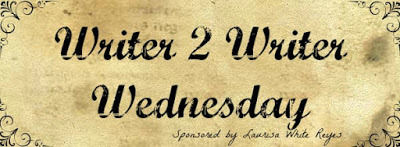
KIDS WRITE, PART VII
“There must be deviations from the rules in order to express almost anything….However, only the man who is familiar with the rules may sometimes violate them, for he alone can know that, in certain cases, the rule is not enough.” – Andre Ernest Modeste Gretry
When I first began to teach writing classes, I went into the job with the assumption that my students already understood the basic rules of grammar and punctuation, and for the most part my assumption was correct. However, the most disconcerting discovery I made was that such an assumption could not be made about every child.
Mary* was fourteen years old and what I would call a bookworm. She was an eager learner and highly intelligent. On the last day of my fiction writing course that year, each of my students were to bring a typed copy of their short story to share with the class.
Mary did not want to read her story out loud, so I volunteered to read it for her. When she handed me her story, however, I was flabbergasted to find not one single use of punctuation on the entire page. There wasn’t a period, comma, or quotation mark in sight. Not only that, but not a single letter was capitalized, every fifth word was misspelled, and the story had been written in one very long block of text. No paragraphs. I did my best to read it, but I struggled to know where to begin and end each sentence.
My class was not a grammar class. I was teaching the craft of fiction writing and expected the kids to learn the basic tools of writing at home. In this case, however, that had obviously not occurred.
When I had the chance, I pulled Mary aside and complimented her on her creative story. She had a knack for humor and character development.
“But,” I told her as gently as I possibly could, “there is no punctuation on the entire page.”
“Oh, I don’t need punctuation,” was her confident reply.
The truth is I am still stunned that anyone could honestly believe they don’t need to use punctuation when they write. I don’t know if her mother had told her that or if she had come to that conclusion on her own, but she was wrong, and I told her so.
Mary’s case was a bit extreme. The vast majority of students who have received any kind of writing instruction, whether at home or in a classroom, will have learned the value of punctuation, proper grammar, and spelling. But parents and teachers should not be lulled into the same easy assumption as I was and allow your child/student to get as far as high school without even being able to put a period in the right place.
Society often tells us, though flippantly, that rules are made to be broken. Writers and poets in particular are notorious for breaking rules.
In his Pulitzer Prize-winning memoir Angela’s Ashes, author Frank McCourt avoids quotation marks like the plague. Ernest Hemingway’s original works were littered with misspelled words. William Faulkner was notorious for his run-on sentences.
This bending and breaking of the rules in contemporary literature may give young writers the impression that the rules are irrelevant when compared to the creative process of writing. This could not be further from the truth. The rules of writing should not be broken, must not be broken, until they are first mastered. If Frank McCourt had written a quotation mark-free story for his college professor, he probably would have received a poor grade indeed.
Mary’s comment that she did not need to use punctuation is to writing like saying we do not need to obey traffic signals is to driving a vehicle. If we fail to stop at a red light, for example, cars will crash into each other, causing a lot of chaos and damage. The same thing happens to language without the proper use of punctuation and grammar.
In Mary’s case, my opportunities to assist her were limited. However, I did manage to teach her a few simple self-checks to help her get her writing under control. Look for these self-checks in next week’s article.
* Name changed for privacy.
Published on May 22, 2019 05:00
May 15, 2019
WRITER 2 WRITER: STORYMAKERS AND POLITICS
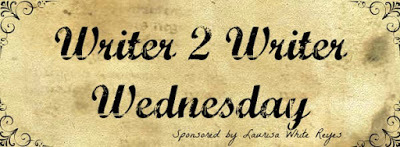
This past weekend I attended the STORYMAKERS WRITERS CONFERENCE in Provo, Utah. I believe this was my 5th visit with this particular conference, and I have to say it was my favorite so far.
First, my daughter Carissa attended with me (she came last year too). She and I not only did conference stuff, but we also hung out with my son Stuart who is attending college nearby, visited with my cousins who I hadn't seen in a long time, saw a play together, and tried several yummy restaurants.
Second, my sister also flew in from Seattle, and we spent plenty of time with her.
Third, the food and classes were excellent! Carissa rightfully stated that the overall quality of this year's conference was much better than last year. We even got a really cool, nice quality business bag instead of the usual tote.
Over the past decade or so, I've attended about thirty different conferences and retreats. Most have been via the SCBWI (Society of Children's Books Writers and Illustrators), some with Storymakers, and others with a variety of different organizations. I've enjoyed them all, but what I love most about Storymakers is the feeling of comradarie and acceptance among the hundreds of attendees. Most of us are members of The Church of Jesus Christ of Latter-day Saints, so we are connected by our faith and values. But other than offering prayers over our meals, you won't hear much spoken about religion or politics or social ideas at Storymakers. It's all about writing.
And that's the way it should be. Despite our common religious backgrounds, there were all kinds of men and women there: blue and purple hair, women with babies, all levels of education, some with band t-shirts and others in dresses, a diversity of personalities and tastes and cultures. Everyone was welcome and accepted.
In recent years, I stopped attending SCBWI events because they became too political. Speakers began inserting their personal political agendas into their presentations, forgetting that children's books writers come from all walks of life. As a politically conservative woman, I increasingly felt that I was not welcome in SCBWI anymore. The organization itself was never meant to be political, but with so many high ranking members and speakers being liberal and becoming so vocal about it, I just stopped feeling like part of the tribe.
Storymakers, on the other hand, has never vocalized politics. By the very nature of the fact that most members are LDS and Christian, most of us are probably conservative too, though not everyone is. But the cool thing is... WHO CARES! At this year's conference, politics were checked at the door, allowing everyone to feel like part of a vast, wonderful family of writers.
Thank you to Storymakers for being so inclusive and making it all about what really counts: WRITING.
Published on May 15, 2019 05:30
May 8, 2019
WRITER 2 WRITER: A WRITER'S JOURNEY
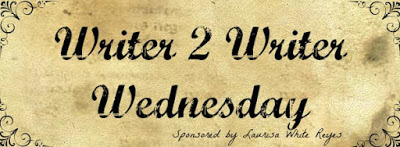
As an author, one of the most common questions I am asked is “How long have you been writing?” My answer is usually something like, “My whole life,” but that’s not really what people want to know. They want to hear about my journey, how I became a published author.
I have fifteen published books under my belt. The first was published in 2012, but that wasn’t the beginning. I wrote my first book in 2006. Couldn’t find a publisher. Wrote my second book in 2007, which took a couple years to revise and polish. I started submitting it to publishers in 2008. Two years later, I signed my first publishing contract. Nearly two years after that, the book [ The Rock of Ivanore , Tanglewood Press] finally came out in 2012.
During the interim years, I kept writing. Book #2 [The Last Enchanter, Tanglewood Press] came out in 2013 with another in 2014 with a different publisher. Then things started going south. My first publisher went on hiatus and announced they were not going to publish the third book in my series. The second publisher just sort of vanished. Fortunately, a third publisher picked up my now orphaned book and republished it [Contact, Evernight Teen]. But I was still stuck with a series installment with no publisher. That’s when my journey changed direction.
Around this time, a friend of mine lost her husband to a sudden illness. She is an amazing sci-fi author but had never published anything, so I founded Skyrocket Press and published her short story collection [Martian Goods, Noelle Campbell]. Since then I’ve published many of my own books and other authors’ books via Skyrocket Press.
Our newest title, The Word and the Struggle by Raymond A. White, is a collection of essays about the Old Testament. I am currently in the process of publishing books three thru six of my fantasy series The Crystal Keeper, which I hope will be out soon.
So that’s it in a nutshell, my author’s journey. Very condensed, I know, but the next time you read a good book, remember that the journey the author followed to get that book into your hands was often a long and difficult one. But I can guarantee that for all of us, it’s been one helluva ride!
Join Skyrocket Press’s mailing list and get a FREE book here:
https://mailchi.mp.7861dc13bbef/skyrocketpressnews
Published on May 08, 2019 05:00
May 6, 2019
TAKING A BREAK
I'm taking a much needed break from blogging and my newsletters for a few weeks. I'll be back around June 1st if not sooner. Thanks.
Published on May 06, 2019 14:28
May 2, 2019
$10 GIVEAWAY - THE CROWN OF STONES by C.L. Schneider
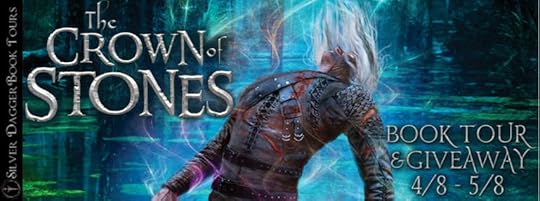
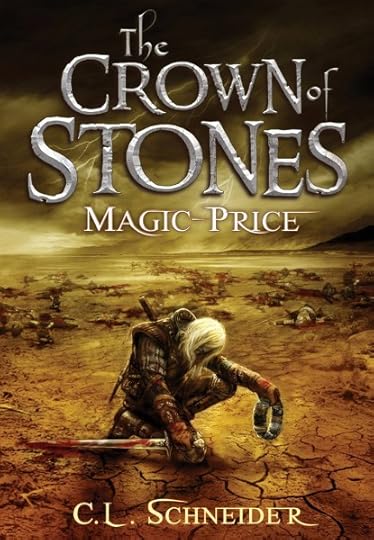 Magic-PriceThe Crown of Stones Book 1by C.L. SchneiderGenre: Epic Fantasy
Magic-PriceThe Crown of Stones Book 1by C.L. SchneiderGenre: Epic Fantasy
Ian Troy is one of the Shinree, a fallen people with an inherent addiction to magic. Scorned and reviled for the deadly side of their spells, the Shinree are bred as slaves. Their magic is suppressed by drugs and used only as it serves the purposes of the other races.
Descended from a long line of soldiers, Ian is conscripted into the Rellan army and made to fight in their longstanding conflict against the ruthless Langorian invaders. The downfall of Rella imminent, Ian goes against orders and turns to the Crown of Stones, an ancient Shinree relic of untold power. Ignorant of its true purpose, Ian uses the crown to end the war, and pays a terrible price.A decade later, still tortured by the aftermath of that day, Ian lives as a bounty hunter in self-imposed exile. Having renounced his magical heritage, he curbs his obsession with a steady stream of wine and regret. He struggles to put it all behind him, until a fateful encounter with a pretty assassin brings Ian’s past crashing into the present.Targeted by a rogue Shinree, and a ruthless old enemy, Ian is forced to use magic again. His deadly addiction is rekindled and his life of isolation is brought to a swift end. With the land he gave up everything to protect once more in jeopardy, and his people’s future at stake, Ian becomes embroiled in a violent race for control of the Crown of Stones. To save the realms and those he cares for, Ian must embrace the thing he fears most: his own power.
Goodreads* Amazon
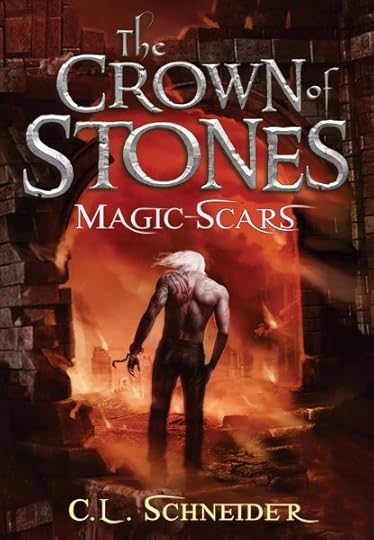 Magic-ScarsThe Crown of Stones Book 2
Magic-ScarsThe Crown of Stones Book 2 Magic doesn’t wound the same as a sword.
Magic doesn’t wound the same as a sword.The story of Ian Troy continues in Magic-Scars, the second installment in C. L. Schneider’s riveting epic fantasy trilogy, The Crown of Stones.
Captured by his old enemy, King Draken of Langor, Shinree magic user Ian Troy was sentenced to prison. Tortured and drugged, robbed of his will, his memories, and his magic, Ian was made to do unspeakable things. Rescued, as his body slowly rids itself of the drug, Ian realizes he has returned to an unfamiliar world gripped with fear. In the wake of his fall, those he cared for were left to their own grim fates. Draken has seized control of the realms and named himself High King. His brutal rein has sparked a desperate rebellion that Ian now finds himself a part of. His one task: recover and repair the Crown of Stones, in hopes it will tip the balance in the revolution that is brewing. In pursuit of the reason behind the artifact’s strange loss of magic, Ian is driven to release an explosion of retribution and power that leaves him irrevocably scarred.
Struggling to reconcile the man he has become with the man he once was, Ian strives to understand the growing number of magic-scars adorning his body. He searches for the truth behind his link to the Crown of Stones and uncovers shocking secrets buried for generations beneath the sand. To become the weapon the resistance needs, he must assume responsibility for his magical inheritance. But can he curb the destructive appetite that comes with it?
The price of Ian’s magic and his addiction have never been higher.
Goodreads* Amazon
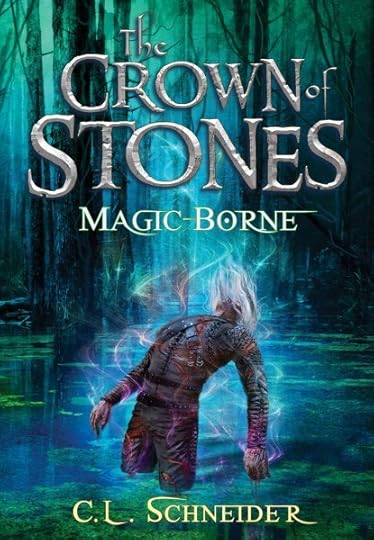 Magic-BorneThe Crown of Stones Book 3
Magic-BorneThe Crown of Stones Book 3 No other Shinree has borne as much of magic's weight, its pleasure, or its guilt.
No other Shinree has borne as much of magic's weight, its pleasure, or its guilt.The fate of Ian Troy is revealed in the final installment of C. L. Schneider's epic fantasy trilogy, The Crown of Stones.
In one fell swoop, the resistance was shattered. Lives were taken. Hope was lost. Peace slipped like grains of sand through his fingers. So did the Crown of Stones. Now, forced into hiding, Ian Troy grapples for a way to save the realm—and free its people—from the sadistic clutches of Jem Reth; Mirra’kelan’s new self-appointed emperor. Plagued with the knowledge of a tragic future, he strives to influence events and save those he cares for. But his magic has betrayed him, and Fate has other plans.
Marked by the crown, hindered by the transformation spell contained within, each cast brings Ian one step closer to becoming more beast than man. Each move brings the death and destruction foretold in his vision inexplicably nearer. With Langor on the brink of war, and King Malaq’s plan for peace hanging in the balance, Ian returns to the ancient past; seeking an end to the eldring spell and a means to thwart Jem’s growing domination. What he finds there sets off a chain of revelations that leads Ian places he never thought to go.
Entrusted with the future of his race, Ian becomes the linchpin for lasting change. But how much weight can one man carry? And how much is he willing to sacrifice in the name of peace?
Goodreads* Amazon

 Born in a small Kansas town on the Missouri river, C.L. Schneider grew up in a house of avid readers and overflowing bookshelves. Her first full-length novel took shape while she was still in high school, on a typewriter in her parent's living room. While her main focus is adult epic and urban fantasy, she also pens the occasional science fiction or post-apocalyptic story.
Born in a small Kansas town on the Missouri river, C.L. Schneider grew up in a house of avid readers and overflowing bookshelves. Her first full-length novel took shape while she was still in high school, on a typewriter in her parent's living room. While her main focus is adult epic and urban fantasy, she also pens the occasional science fiction or post-apocalyptic story.Though she has been writing all of her life, Magic-Price (the first installment in The Crown of Stones Trilogy) was Schneider's first published novel. With the trilogy complete, she is excited to be embarking on a new path with her urban fantasy series, Nite Fire.
Learn more about C.L. Schneider and her work at clschneiderauthor.com, where you can read reviews, excerpts, sneak peeks and teasers, subscribe to her newsletter, and join her Street Team. Look for book reviews and guest posts, and follow her journey as an indie author, on her blog, "Heading Down The Yellow Brick Road". An active part of the online indie author community, you can connect with C.L. Schneider on Twitter, Facebook, Goodreads, and Google+, where she chats about books, zombies, coffee, and the wonderful roller coaster of a writer's life.
Website* Newsletter * Facebook * Twitter* Instagram* Bookbub* Amazon * Goodreads
 Follow the tour HEREfor exclusive content and a giveaway!
Follow the tour HEREfor exclusive content and a giveaway!
a Rafflecopter giveaway
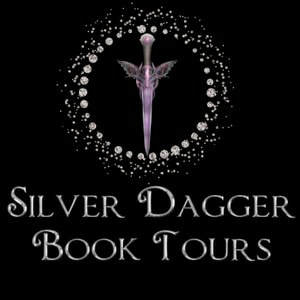
Published on May 02, 2019 05:30
May 1, 2019
FANTASY FIX - FREE EBOOK DOWNLOADS
Published on May 01, 2019 06:51
WRITER 2 WRITER: 3 TIPS FOR WRITING FUNNY
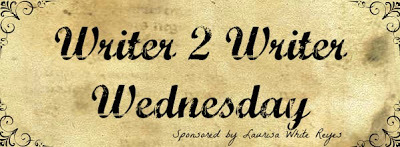
Funny books. Kids love ’em. My kids have been avid fans of Captain Underpants and Diary of a Wimpy Kid for years, and they’re not alone. Dav Pilkey’s hit sensation has sold more than 70 million copies, and the latest addition to the series has been on the New York Times Best-seller List for 86 weeks. Even more astonishing is Jeff Kinney’s series, which has sold over 150 million copies! Hard Luck has been on the list for 446 weeks, while the author’s newest title, Dog Man , currently dominates the list’s top spot. So, there’s no doubt writing funny is worthwhile.
When I first started writing, I wanted to make kids laugh. Not all the time (I’d leave the gut-busting chortles to Pilkey), but an occasional chuckle was fine by me. Unfortunately, writing funny requires a certain flare that doesn’t come naturally to me. So, to infuse humor into my books, I turn to the masters for advice.
Remember Fonzi from the hit 70’s sitcom, Happy Days ? He’s a best-selling author now and as funny as ever. He and Lin Oliver, founder and President of The Society of Children’s Books Writers & Illustrators co-write the hilarious Ghost Buddy and Hank Zipzer series.
One thing about Henry Winkler and Lin Oliver is that being funny comes second nature to them. Everything that comes out of their mouths is funny, so of course their writing is funny too. But comedians, actors, and best-selling authors do not have the corner market on humor. Here are some ideas from Henry and Lin that any author can use.
1. EXAGGERATE
When writing dialog, write over the top. Instead of saying, “That candy bar cost me two whole dollars!” say “That freakin’ candy bar cost as much as Fort Knox!” Or instead of writing, “Johnny, I called you three times! Didn’t you hear me?” try “I called your name a gazillion times! Are there marbles in your ears?”
Characterizations and descriptions can be over the top too, like a bald super hero who wears whitey tidies and window curtains for a cape.
2. ADD THE STRAIGHT MAN
Abbot and Costello, Lucy and Ricky, Pinky and the Brain! Every great comedy duo has the funny man and the straight man. Jokes are funnier when played off the serious guy who either doesn’t find it comical or just doesn’t get it. Winkler and Oliver’s characters Billy Broccoli and The Hoove from their Ghost Buddy series are great examples of this. The Hoove’s hilarious jokes are often lost on Billy, but readers laugh every time.
3. ACT IT OUT
Once you write a scene that needs to be funny, try acting it out with a partner. Humor comes more naturally during conversation. So, read the scene aloud, encourage improvisation, and see where it leads. Henry Winkler and Lin Oliver do this while writing their books, and the results are uproarious!
Still lacking confidence to craft a laugh-out-loud scene in your book? Check out Writers Digest’s How to Write Funny for more great tips!
Published on May 01, 2019 05:00
April 30, 2019
$100 GIVEAWAY - THE FRIGHTS OF FIJI by Sunayna Prasad
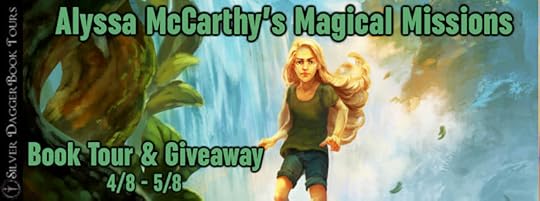
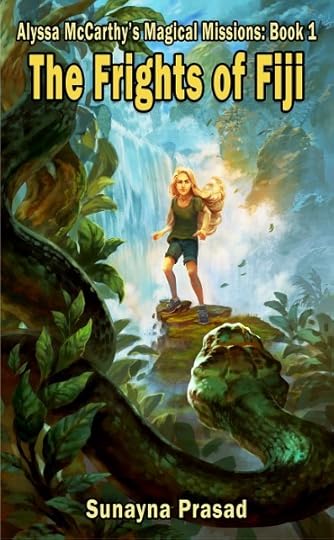 The Frights of FijiAlyssa McCarthy's Magical Missions: Book 1by Sunayna PrasadGenre: Middle Grade Fantasy
The Frights of FijiAlyssa McCarthy's Magical Missions: Book 1by Sunayna PrasadGenre: Middle Grade Fantasy  A world of magic and adventure awaits…
A world of magic and adventure awaits…Sent to live with her strict, aloof, and uncaring uncle after her parents are killed in a car accident, twelve-year-old orphan Alyssa McCarthy longs for the life she used to have—one filled with fun and love. Then one stormy night, a message appears in the raindrops on the window that will change everything.
"Your life will never be the same again, as magic will interfere."
Before long, Alyssa is kidnapped by Master Beau, a banished sorcerer with a mysterious connection to her who can only regain his power by weakening hers. Suddenly hurled into a world of wizardry filled with fantastical beasts and marvelous technology beyond her wildest imagination, Alyssa must defeat Master Beau if she ever wants to get home again. But Master Beau will stop at nothing, including using Alyssa’s friends, to ensure he is triumphant.
Originally titled "From Frights to Flaws", this story is the exciting and enchanting first book in the "Magical Missions" series.
**Only 99 cents**Goodreads* Amazon
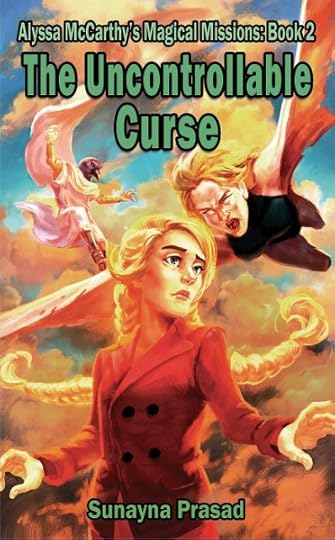 The Uncontrollable CurseAlyssa McCarthy's Magical Missions: Book 2
The Uncontrollable CurseAlyssa McCarthy's Magical Missions: Book 2 History, like magic, has a habit of repeating itself
History, like magic, has a habit of repeating itselfIt’s been six months since thirteen-year-old Alyssa McCarthy left magic behind for good. Or so she thought…
Then the enchanted objects that protected her disappear. Now a skeleton named Errol has cursed her with magical powers that keep getting her in trouble. Suddenly strange things are happening with disastrous effects, and if Alyssa can’t learn to control the magic, she will lose everything she holds dear.
In order to get rid of her unwanted wizardry, Alyssa will have to boost her bravery and confidence and determine who Errol really is. But every time Alyssa uses an enchantment, Errol is one step closer to getting his flesh back and becoming alive, and he will do anything to achieve his goals…even if it means destroying Alyssa’s happiness.
Originally published in 2016 as "Wizardry Gone Wild", "The Uncontrollable Curse" is book two in the exciting and suspenseful paranormal Magical Missions series.
Goodreads* Amazon

 Sunayna Prasad has been writing stories for over several years, starting at the age of six. Now twenty-four, she is done with college and will pursue a career in art and design as well as continue to write for children. Aside from that, Sunayna also likes to cook, watch movies, and draw. She lives on Long Island, New York, with her family.
Sunayna Prasad has been writing stories for over several years, starting at the age of six. Now twenty-four, she is done with college and will pursue a career in art and design as well as continue to write for children. Aside from that, Sunayna also likes to cook, watch movies, and draw. She lives on Long Island, New York, with her family.Website* Facebook* Twitter * Amazon* Goodreads
 Follow the tour HEREfor exclusive content and a giveaway!
Follow the tour HEREfor exclusive content and a giveaway!

a Rafflecopter giveaway

Published on April 30, 2019 05:30

